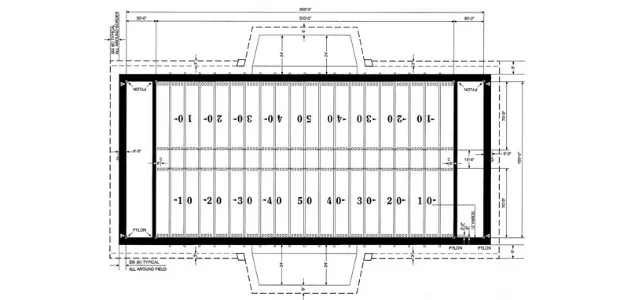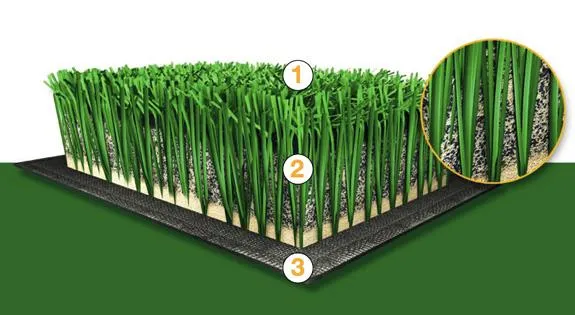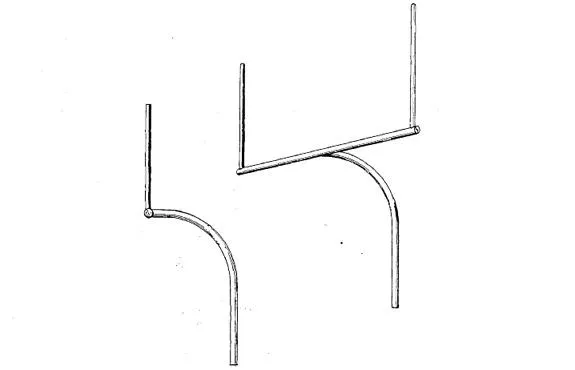How the Football Field Was Designed, from Hash Marks to Goal Posts
The American football field as evolved over more than 100 years, and with it, the game
/https://tf-cmsv2-smithsonianmag-media.s3.amazonaws.com/filer/28/fa/28fad934-b1ee-4a35-bf62-b9a4175e32ae/nfl-field-logo.gif)
We’re three weeks into football season in America and since every team I root for has a losing record, I thought it might be a good time to take a break from watching games to look a little closer at the game itself, starting with the field.
The origin of American football is surprisingly complex, but here’s the abridged version: professional football was formally organized in 1920, from loosely affiliated professional organizations that evolved out of college football, which was born out of rugby, which, of course, has its origins in soccer – also known as football to everyone else in the world. While American football bears little resemblance to these earlier games, the fields are vaguely similar large, green rectangles that connote their shared history. However, American football is unique in that the field exists independently of the ball. That is to say, the field does not need to be a perfectly flat or consistent surface in order to accommodate the rolls or bounces of a ball. Football is a battle for territory as much as points, and so the field primarily serves as a way to measure the progress of this battle. And it also cushions tackles. Well, it mostly cushions tackles – but more on that in a minute.

Rule one, section one of the National Football League rulebook addresses all things related to the playing field. So let’s start with page one and get the basics out of the way: The field, end zones included, is a rectangle that measures 360 feet long by 160 feet wide. To put that into perspective, it’s roughly the size of one whole football field. According to official NFL rules, 30-foot deep scoring end zones bookend the field, which is demarcated by horizontal lines every five yards, with two-yard-long numbers indicating yard lines in multiples of 10 placed exactly twelve yards in from the sideline. Their font, surprisingly, isn’t officially standardized. Around the perimeter of the field, space must also be provided for stopping room, in theory giving players an area to slow down so they don’t accidentally charge into something (or someone) once they exit the field of play (unsurprisingly, it doesn’t always work). All lines and field markings must be painted white. The grass must be green. This is the basic field. It remained largely unchanged for the first 10 years of the game.

The first significant changes to the field –and to the game– came in the 1933 when two rows of hash marks were added near the center of the field at one-yard intervals. More than just aesthetic, the hash marks heralded one of professional football’s first deviations from the college game: at the end of each play, the ball would now be placed on the nearest hash mark. Prior to the rule change, all plays began where the ball was declared dead.
But what of the ground below these painted markings? The turf, the dirt, terra ludus. From its inception, football was played on grass. But, depending on the region, different stadiums use different types of grass: Kentucky Blue, Bermuda, Rye, Fescue, and so on. Of course, different types of grass result in different playing fields and practice fields, giving credence to the idea of home-field advantage as local players become accustomed to the barely perceptible variations in the ground beneath their feet.
In the 1960s, as domed fields became popular, natural grass became more incredibly expensive –if not entirely impossible– to maintain, and in 1966 an artificial playing surface was used for the first time in professional football. AstroTurf, a brand name that’s often used as generic description for artificial grass, was initially developed in the 1950s and 60s by the Chemstrand Company, a subsidiary of Monsanto, for use in more durable carpeting. During this same time, the Ford Foundation was interested in improving physical fitness programs in schools and approached Chemsand to create a versatile urban sports surface for schools. In 1964, “Chemgrass” was born. The synthetic fiber surface was re-dubbed “AstroTurf” after making its debut in 1966 in the Houston Astrodome.
Although AstroTurf was designed for both foot traction and cushioning, players claimed that the surface grabbed their cleats, making sharp cuts more difficult and, perhaps more importantly, AstroTurf was hard. Getting tackled on AstroTurf hurt – more than usual. Studies performed in the 1980s and 90s determined that playing on AstroTurf was more likely to lead to injuries. Contemporary turf alleviates many of these problems, and is much more similar to real grass.

Today, most fields using a synthetic playing surface have opted for FieldTurf, a brand first used in 2002. The new turf is made from more grass-like polymer fibers designed for durability and traction – each “row” of fibers matches the average width of a football cleat. These fibers are surrounded with a mix of high-grade rubber and sand particles to provide cushioning for players and make it easier for sharp cuts. Finally, a porous mat binds the turf to the ground and allows for draining. Not only does FieldTurf look better than the original AstroTurf, it’s safer – the rubber in-fill provides much more cushioning and the polymer “grass” doesn’t cause turf burns. Finally, because the grass is artificial it could, technically, be any color. Thankfully, the NFL mandated in 2011 that all playing fields must be green. The so-called “Boise rule” is named for Boise State’s unique blue field – aka “smurf turf.” The rationale doesn’t have anything to do with the tradition of sport, but with the ubiquitous sponsorships that seem to be plastered over every possible surface in a professional sports stadium or arena. League owners wanted to preempt any advanced marketing strategies calling for red Coca-Cola fields or blue Chase bank fields.

Perhaps one of the most visible changes to the game –and one that had the most impact on how the game is played– came with the redesign and relocation of the goal posts. Goal posts originally consisted of two separate vertical posts with a cross bar between them, and were installed on the goal line at the front of the end zone. As you might imagine, this did sometimes lead to players colliding with the goal posts (in Canada, goal posts are still located on the goal line, which still results in some nasty collisions). Today’s model, known for obvious reasons as “the slingshot” goalpost was first proposed in 1967 by Joel Rottman, a retired magazine and newspaper distributor and part-time inventor who came up with idea while eating a steak lunch and noticing the prongs on his fork. As seen in Rottman’s patent, the original design called for 10-ft uprights. The uprights were extended at the request of NFL commissioner Pete Rozelle, who then agreed to allow their use in professional play. Within the year every NFL team was using the new slingshot uprights. In 1974 the goal posts were moved from the goal line, where they had been since the first rule changes in 1933, to the back of the end zone.
These are just a few of the more prominent changes to the game. Of course, the technical aspect of a football fields –drainage, irrigation, and maintenance– must also be considered in the design of a field. And it should be noted that stadium design has changed drastically as well, undoubtedly having an impact on players, as professional sports has become an incredibly profitable industry. Though at first glance, today’s field may not look that different from its predecessors, it didn’t spring into existence as a perfectly designed field of play. Neither did the game. Minor changes effect strategy and impact scoring. It’s taken more than 100 years for the professional football field to evolve to its current state, with every alteration, no matter how small, adding up to profoundly change the game.
/https://tf-cmsv2-smithsonianmag-media.s3.amazonaws.com/accounts/headshot/Jimmy-Stamp-240.jpg)
/https://tf-cmsv2-smithsonianmag-media.s3.amazonaws.com/accounts/headshot/Jimmy-Stamp-240.jpg)